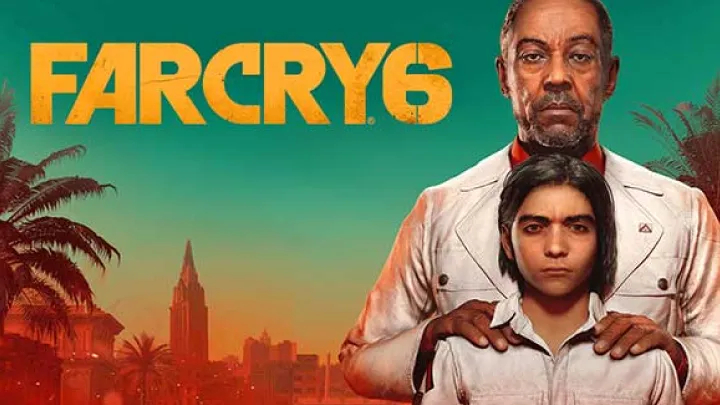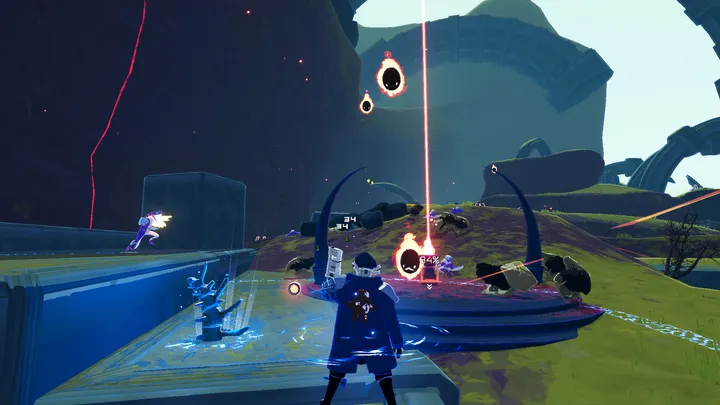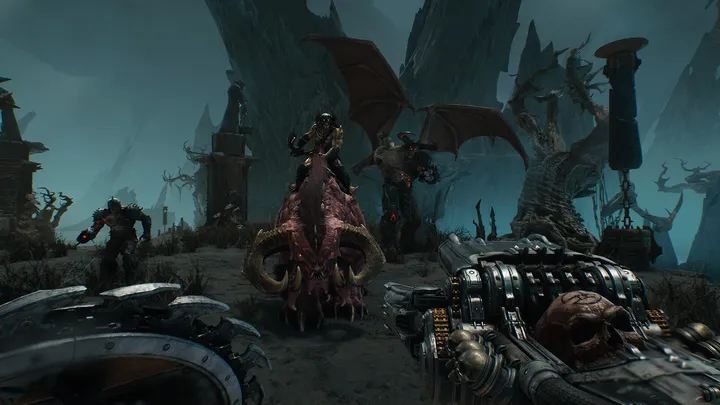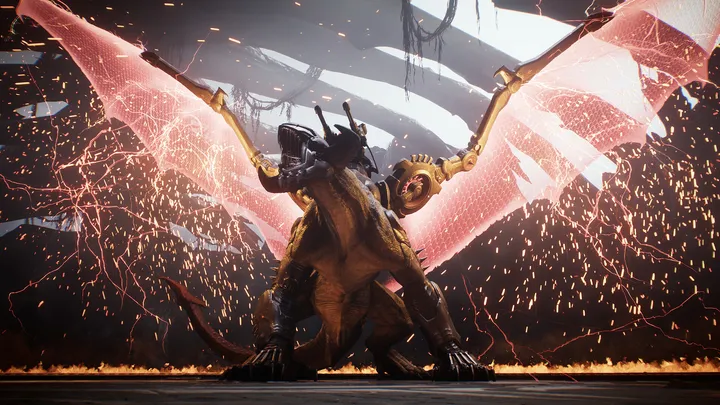
Introduction
Far Cry 6 arrived with much anticipation from fans of the franchise, offering a vibrant open-world experience set in the fictional Caribbean nation of Yara. This installment aims to immerse players in a rich narrative filled with political strife, rebellion, and the clash between a tyrannical regime and its citizens. However, despite its vivid setting and compelling premise, one persistent issue has emerged: narrative cohesion. While the game boasts exciting gameplay and memorable characters, many players feel that the overarching narrative struggles to maintain focus and clarity. This article delves into the complexities of narrative cohesion in Far Cry 6, examining how various elements contribute to the overall experience and exploring potential implications for player engagement.
The Narrative Framework of Far Cry 6
Understanding the Setting
Far Cry 6 is set in Yara, a tropical island characterized by stunning landscapes, bustling cities, and oppressive military presence. The game centers around the character of Dani Rojas, a customizable protagonist drawn into the Yaran revolution against the ruthless dictator, Anton Castillo. The game's premise positions itself within a politically charged context, aiming to depict the struggle of the oppressed against an authoritarian regime, akin to themes seen in various real-world scenarios.
Initial Narrative Elements
The game begins by establishing its protagonist, Dani, who becomes embroiled in the conflict after witnessing the brutality of Castillo's regime firsthand. The narrative invites players to empathize with the local populace and participate in their fight for freedom. However, the initial setup casts a wide net, introducing several secondary characters and subplots that, while intriguing, often contribute to a scattered narrative focus.
Inconsistent Character Development
Introducing Key Characters
Far Cry 6 features an array of colorful characters, from the charismatic guerrilla leader Libertad to the cunning antagonist Anton Castillo. Each character is imbued with personality, motivations, and unique backstories. However, the depth of character development varies significantly throughout the game.
The Problem of Underutilization
Many secondary characters, despite having potential for growth and engagement, appear underutilized. For instance, characters such as Juan Cortez and Clara García offer compelling narratives and missions that could enrich the story. However, their arcs often feel limited, leaving players wanting more depth. The focus on Dani’s journey, while essential, sometimes sidelines these characters, leading to missed opportunities for emotional connection and thematic exploration.
Narrative Disjointedness
Mission Structure and Cohesion
The mission structure in Far Cry 6 contributes to its narrative disjointedness. Players often find themselves moving from one mission to another without clear transitions or comprehensive story arcs connecting them. While side missions and activities can enhance gameplay, the lack of narrative bridging can create a sense of disconnection from the main storyline.
The Impact of Open World Design
Open-world design inherently invites exploration, yet this can also dilute narrative tension. Players may invest time in side missions or activities that feel tangential to the main story, leading to a sense of pacing issues. Rather than a cohesive narrative unfolding, players may feel as though they are experiencing a collection of disjointed moments, impacting their overall engagement with the central story.
The Role of Themes and Motifs
Exploring the Theme of Revolution
At its core, Far Cry 6 aims to explore themes of revolution, tyranny, and freedom. The narrative poses questions about what it means to fight for a better future while grappling with the moral complexities of violence and resistance. However, these themes are often overshadowed by the game's pacing and narrative inconsistencies.
The Danger of Surface-Level Exploration
While the game touches upon significant themes, they often feel superficial. The revolutionary struggle could delve deeper into the philosophical implications of war and sacrifice, but instead, the narrative frequently defaults to action-oriented gameplay at the expense of deeper exploration. This danger can dilute the potential impact of its storytelling, rendering important themes as mere background noise.
Side Missions and Their Influence
The Nature of Side Missions
While side missions can augment gameplay, they may also exacerbate narrative cohesion issues. In Far Cry 6, optional missions often include fetch quests, animal hunting, and other tasks that, while enjoyable, may feel disconnected from the overarching narrative. Engaging in these activities can divert players' attention away from critical story elements, contributing to a lack of focus.
Quality vs. Quantity
The abundance of side missions can be both a blessing and a curse. Although players appreciate the variety, the quality of these missions can impact their perceived importance. If side missions do not enhance the game's narrative or character development, they may feel like filler rather than integral components of the overall experience.
The Role of Humor and Tone
Balancing Humor with Serious Themes
Far Cry 6 incorporates humor and satire to address serious themes. While the intention may be to lighten the narrative, this tonal dissonance can lead to confusion about the game's central message. When the narrative alternates between comedic elements and serious political themes, players may struggle to reconcile these differing tones, contributing to a lack of narrative cohesion.
The Risk of Tone Shifts
The risk of dramatic tone shifts lies in undermining emotional investment. If players are confronted with hilarious moments during serious narratives, it can detract from the weight of key events, making it difficult to maintain immersion. Finding the right balance between humor and gravity is crucial for a coherent storytelling experience.
Player Engagement and Investment
Building Emotional Connections
The potential for player engagement in Far Cry 6 is immense, given its themes, environment, and character potential. However, inconsistent character development and narrative disjointedness can diminish emotional investment. Players often seek meaningful connections with the characters they interact with; when these connections feel shallow or unfulfilled, it can hinder their overall experience.
The Importance of Narrative Stakes
Throughout the storyline, the stakes need to feel tangible to immerse players fully. If the narrative lacks a clear trajectory or fails to establish meaningful stakes, players may disengage. The tension surrounding the Yaran revolution should evoke genuine concern and anticipation, yet inconsistent pacing and character arcs can undermine this emotional engagement.
Community Reception and Critiques
Diverse Player Opinions
The reception of Far Cry 6 has been polarizing, with some praising its gameplay mechanics and others expressing dissatisfaction with its narrative cohesion. Players have taken to forums and social media to share their thoughts, ranging from admiration for the world-building to critiques on the disjointed storytelling.
Constructive Critiques
Critics have pointed out that while Far Cry 6 offers enjoyable gameplay and an intriguing world, the overarching narrative fails to maintain a coherent path. Many players urge developers to consider the importance of cohesive storytelling in future installments. Addressing these concerns can lead to a more satisfying experience that intertwines gameplay and narrative more effectively.
The Path Forward for Far Cry
Learning from Far Cry 6
As the franchise evolves, enhancing narrative cohesion should be a priority for future titles. Combining engaging gameplay with a well-structured narrative can elevate the experience, creating a more immersive world for players. By addressing issues surrounding character development, pacing, and thematic exploration, developers can ensure a more fulfilling storytelling experience.
Fostering Deeper Character Arcs
Deepening character arcs can provide players with the emotional investment necessary to engage fully with the story. By fleshing out secondary characters and connecting them more directly to the central narrative, developers can create richer interactions that resonate. Providing players with meaningful choices regarding these characters could also enhance the overall experience.
Conclusion
Far Cry 6 presents an engaging gameplay experience set against a vibrant backdrop, yet its narrative cohesion remains a significant concern. The inconsistencies in pacing, character development, and thematic explorations dilute the potential impact of its storytelling. Despite its strengths, the game struggles to maintain a clear narrative path, leading to a scattered experience. By focusing on improving narrative cohesion in future installments, the franchise can elevate its storytelling and provide a richer, more immersive world for players to explore.

















